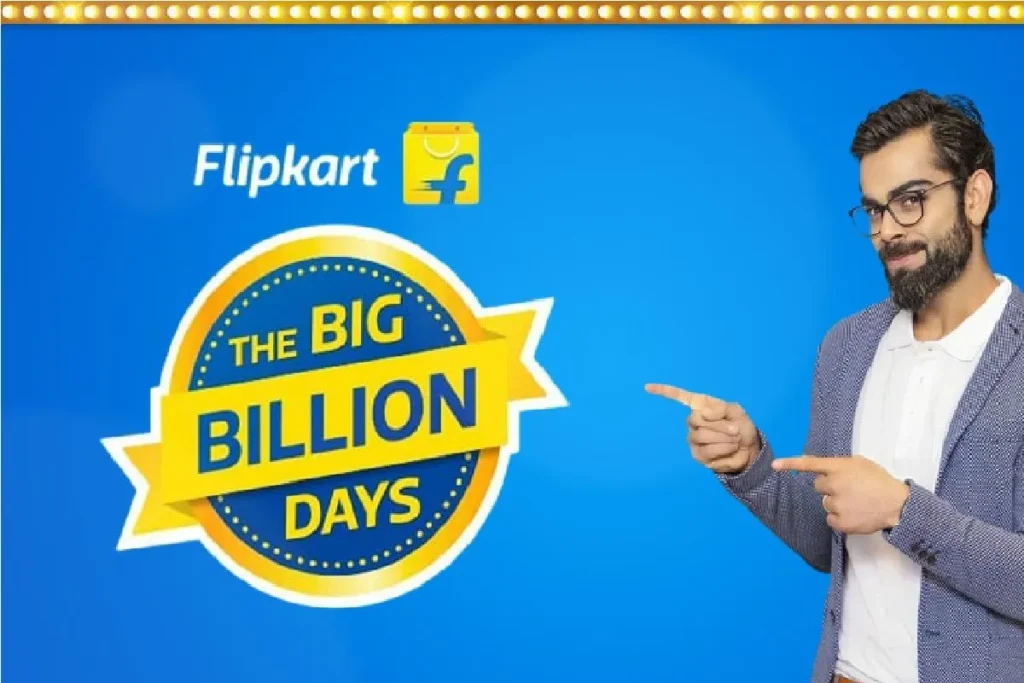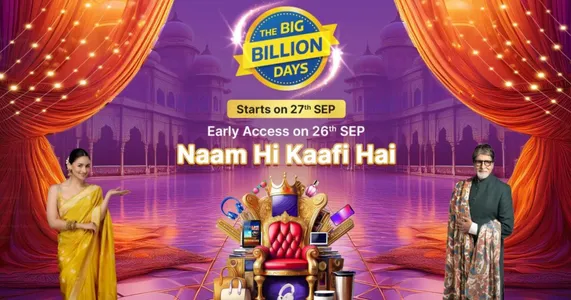The Flipkart Big Billion Days sale is one of Flipkart’s biggest annual sales, offering huge discounts on a wide range of products. The 2024 sale will run from September 27 to October 6, with Flipkart Plus members getting early access on September 26.

In the realm of Indian e-commerce, few events generate as much excitement as Flipkart’s Big Billion Day. Launched in 2014, this annual sale has transformed the shopping landscape, offering consumers a chance to grab unbeatable deals across a myriad of product categories. Here’s a closer look at what makes this shopping extravaganza a highlight of the year.
A Phenomenal Start
The inaugural Big Billion Day in 2014 set the tone for future sales with its staggering discounts and offers. Within just 10 hours, Flipkart reported sales worth millions, showcasing the immense potential of online shopping in India. The event quickly captured the public’s imagination, becoming synonymous with deep discounts and a race against time.
Unmatched Discounts and Deals
What truly sets the Big Billion Day apart is the sheer scale of discounts offered. From electronics and fashion to home appliances and groceries, the event features products at prices that often drop to half or even lower. Flipkart collaborates with various brands to create exclusive offers, enticing customers with flash sales, bundle deals, and limited-time offers.
Additionally, the platform leverages its extensive network of sellers and logistics partners to ensure swift delivery, enhancing the overall shopping experience. The excitement peaks as consumers eagerly anticipate the launch of deals, often refreshing the app or website as the countdown ticks down.
Innovation in Shopping Experience
Flipkart continually innovates to enhance the shopping experience during the Big Billion Day. Features such as live deals, personalized recommendations, and virtual try-ons for fashion items engage users and make the shopping process interactive. The use of gamification, where customers can earn rewards for sharing deals or participating in contests, adds an extra layer of fun to the event.
Moreover, Flipkart invests heavily in technology to ensure seamless navigation and a stable platform, even as millions of users flock to the site simultaneously. The anticipation is palpable, as customers gear up to score their favorite items before they run out.
The Power of Marketing
Flipkart’s marketing strategies play a crucial role in building hype around the Big Billion Day. With massive advertising campaigns that span television, digital platforms, and social media, the event is hard to miss. Engaging promotions featuring popular celebrities and influencers create buzz and excitement, making the sale a cultural phenomenon in India.
The company also employs targeted advertising to reach specific demographics, ensuring that promotions resonate with various consumer segments. This comprehensive approach helps build anticipation and encourages shoppers to plan their purchases ahead of time.
Impact on the Retail Landscape
The Big Billion Day has had a profound impact on the Indian retail sector. It has not only propelled Flipkart into the forefront of e-commerce but has also set a benchmark for competitors. Other platforms have since launched their own mega sales, leading to an overall increase in online shopping.
Additionally, the event has empowered local sellers and small businesses, providing them a platform to reach a larger audience. Flipkart’s initiatives to promote “Make in India” products have further strengthened this commitment, showcasing the potential of Indian craftsmanship on a global stage.
Navigating Challenges
While Flipkart’s Big Billion Day is a remarkable success story, it hasn’t been without challenges. High traffic volumes can lead to website crashes or delays, frustrating eager shoppers. However, Flipkart has worked to mitigate these issues through technological upgrades and improved server capacity.
Furthermore, as consumer behavior shifts towards sustainable shopping, Flipkart faces the challenge of balancing discounts with environmentally responsible practices. Initiatives to promote eco-friendly products and reduce packaging waste are becoming increasingly important in shaping the future of e-commerce.
Conclusion
Flipkart’s Big Billion Day stands as a testament to the evolution of shopping in India. It encapsulates the excitement of getting great deals while showcasing the potential of e-commerce. With its innovative strategies, vast product offerings, and commitment to consumer engagement, Flipkart continues to lead the charge in transforming how Indians shop.
As the event gears up for another year, one thing is certain: the Big Billion Day will remain a much-anticipated highlight in the Indian retail calendar, shaping consumer habits and driving the future of online shopping.
Key Features
Big Billion Day is characterized by:
- Unbeatable Discounts: Up to 90% off on various products.
- Exclusive Launches: New products and brands debut exclusively during BBT.
- Flash Sales: Limited-time deals on popular items.
- Buy Now, Pay Later: Flexible payment options, including EMI and cash-on-delivery.
- Gamification: Interactive games and contests offering additional discounts.
Impact and Statistics
Big Billion Day has:
- Boosted Sales: Generated billions of dollars in revenue.
- Increased Customer Base: Attracted millions of new customers.
- Driven Economic Growth: Contributed to India’s e-commerce growth.
Some impressive statistics:
- 2014: 1.6 million orders in 24 hours.
- 2015: ₹3,000 crores (approximately $400 million USD) revenue in 24 hours.
- 2019: 1.3 billion visits during the six-day sale.
- 2020: ₹1.4 lakh crores (approximately $19 billion USD) in sales during the eight-day sale.
Marketing Strategies
Flipkart’s promotional tactics include:
- Teaser Campaigns: Pre-sale hype creation through social media and advertisements.
- Influencer Partnerships: Collaborations with celebrities and social media influencers.
- Social Media Contests: Engaging games and quizzes.
- Email Marketing: Exclusive offers for subscribers.
Challenges and Controversies
Despite its success, Big Billion Day has faced:
- Technical Issues: Website crashes and slow loading times.
- Complaints: Customers expressing dissatisfaction with delayed deliveries and product quality.
- Competition: Rival e-commerce platforms launching similar sales.
Future Outlook
As Flipkart continues to innovate and expand, Big Billion Day is likely to:
- Expand Product Categories: Include more diverse offerings.
- Enhance Customer Experience: Improve website performance and delivery times.
- Integrate Emerging Technologies: Leverage AI, AR, and VR for immersive shopping experiences.
Conclusion
Flipkart’s Big Billion Day has redefined India’s e-commerce landscape, offering customers unparalleled shopping experiences. As the event continues to grow, Flipkart must address challenges and innovate to maintain its market leadership.
Timeline
- 2014: First Big Billion Day sale (October 6)
- 2015: Expanded to five-day sale
- 2016: Introduced exclusive launches and flash sales
- 2019: Six-day sale with 1.3 billion visits
- 2020: Eight-day sale with ₹1.4 lakh crores revenue
Sources
- Flipkart official website
- Industry reports and publications
- News articles and interviews with Flipkart executives.


